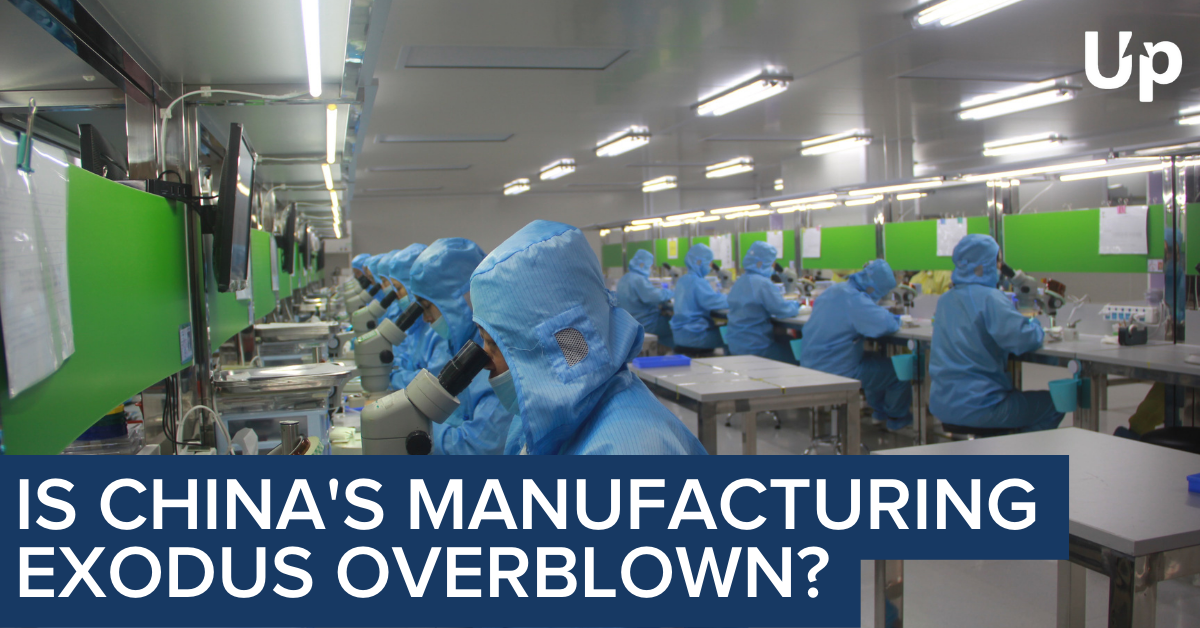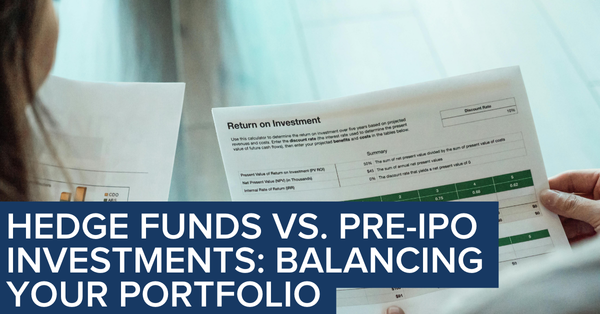Is China's Manufacturing Exodus Overblown? What Investors Need to Know

China's manufacturing industry, long considered the "factory of the world," has faced significant challenges in recent years. These ranged from domestic COVID-19 disruptions, supply chain complications, and trade tensions with the US. As a result, some manufacturers are leaving China in search of alternative manufacturing bases. In this article, we explore the current state of China's manufacturing industry, where it's going, and what investors need to know about the potential impact on their portfolios.
China's Manufacturing Woes
In December 2022, China's factory activity shrank for the third straight month, and at the sharpest pace in nearly three years as COVID infections swept through production lines across the country. The official purchasing managers' index (PMI) fell to 47.0 from 48.0 in November, the National Bureau of Statistics (NBS) said. The 50-point mark separates contraction from growth on a monthly basis. January showed some promise but was near flat at 50.1.
Some analysts have said surging infections could cause temporary labor shortages and increased supply chain disruptions. In fact, Reuters reported that Tesla plans to run a reduced production schedule at its Shanghai plant in January, extending the reduced output it began this month into next year.
The drop in factory activity was the biggest since the early days of the pandemic in February 2020, and the data offered the first official snapshot of the manufacturing sector after China removed the world's strictest COVID restrictions in early December. This comparison makes sense given cumulative infections likely reached 18.6 million in December, as estimated by UK-based health data firm Airfinity.
Weakening external demand on the back of growing global recession fears amid rising interest rates, inflation, and the war in Ukraine may further slow China's exports, hurting its massive manufacturing sector and hampering economic recovery.
China's January factory gate prices fell more than economists expected, suggesting that flashes of domestic demand that had stoked consumer prices after the zero-COVID policy ended are not yet strong enough to rekindle upstream sectors. The producer price index (PPI) was down 0.8% from a year earlier, extending the 0.7% drop the prior month.
Where Manufacturing Is Going?
One reason for China's more recent manufacturing woes is that some companies are shifting production away from China to other countries in search of cheaper labor and less geopolitical risk. These countries include Vietnam, India, and Bangladesh, among others. This trend has been gaining momentum for several years, and the COVID-19 pandemic has accelerated it. In 2020, the US-China trade war was the main driver behind companies looking to diversify their production away from China.
US Chip Ban and Its Impact on China's Manufacturing Industry
The Biden administration's recent chip ban on China could also drive more companies away from China. The ban has also led to increased investment in domestic semiconductor production in China, as the country looks to become more self-sufficient in the production of these critical components. However, China's domestic chip production is still in its early stages, and it is unclear how long it will take for the country to become a major player in the global semiconductor market.
This US policy seems to be aimed at weakening China's high-tech industries, and global influence. In 2020, the US government placed restrictions on the sale of technology products to certain Chinese companies, including Huawei and ZTE, citing national security concerns. This ban has had a significant impact on China's technology and manufacturing industries, as both companies rely heavily on American-made chips in their products.
Another possible result of technology bans and embargoes is the potential for increased domestic investment in China, especially in high-value hardware and strategic technology solutions. In essence, since China can’t source certain components or technology abroad, it will have to produce them domestically. For insights into where China’s domestic investment trend may be headed, UpMarket recently hosted a partner from Chinese VC firm, Delta Capital, where he shared insights about what trends he’s seeing now.
China's Changing Demographics and Impact on Labor Costs
Another issue facing China's manufacturing industry is its changing demographics. China's working-age population, defined as those aged between 15 and 64, has been shrinking since 2010, and the trend is expected to continue in the coming years. This shrinking labor pool could cause labor costs to rise, making it less attractive for manufacturers to stay in China. As the Wall Street Journal recently noted, “China’s population fell outright last year for the first time since the early 1960s.”
At the same time, wages in China's manufacturing industry have been rising, reflecting the country's economic growth and the rising cost of living. As China's population continues to age, it is likely that the cost of labor will continue to increase as the supply of workers declines. The country's one-child policy, which was in place for over 30 years, has contributed to this demographic headwind. In 2015, China announced that it was ending the policy and allowing couples to have two children, but the obvious lag means the impact of the policy will be felt for years to come.
The aging population has led to a shortage of workers, particularly in the manufacturing sector as young Chinese seem to prefer jobs outside manufacturing. As a result, wages are increasing, and manufacturers are finding it more difficult to recruit and retain workers. This has resulted in some companies moving their operations to countries where labor is cheaper and more abundant.
Can China Remain a Manufacturing Powerhouse?
Despite the challenges facing China's manufacturing industry, many analysts believe that the country will remain a manufacturing powerhouse for years to come. China has a highly skilled workforce, an efficient supply chain, and a large and growing domestic market.
Moreover, the Chinese government has made it a priority to upgrade the country's manufacturing capabilities and has plans to invest heavily in advanced technologies like artificial intelligence, robotics, and 5G. This continued drive towards innovation may help Chinese manufacturers to move up the value chain and produce more high-tech products.
However, the challenges facing China's manufacturing industry should not be ignored. The country must continue to address issues like rising labor costs, geopolitical tensions, and demographic shifts to remain competitive on the global stage.
Conclusion
The COVID-19 pandemic has accelerated the trend of manufacturing leaving China. Companies are seeking to diversify their supply chains and reduce their reliance on a single country given the potential for geopolitical conflict. This trend has been amplified by the US-China trade war, rising labor costs, demographic shifts, and other challenges facing China's manufacturing industry.
While China will likely remain a manufacturing powerhouse for years to come, the country will need to address these challenges to stay competitive. The Chinese government's focus on upgrading the country's manufacturing capabilities and investing in advanced technologies is a positive sign, but much work remains to be done.
Investors with a global perspective should pay close attention to these developments, as they could have significant implications in both the US and Chinese markets. For those looking to learn more about how early-stage Chinese VC investment is shaping that future, you are welcome to watch UpMarket’s discussion with leadership from Chinese VC firm, Delta Capital.
Where do you think China’s manufacturing sector is headed?
Disclaimer: The information contained in this article is not investment advice; and does not constitute a recommendation to buy or sell any securities. The information within this article is meant for informational purposes only. Any statement in this document does not mean that the firm nor its employees agrees, endorses or approves any content of the document. This article is only for knowledge sharing and does not constitute any investment advice. Anyone who makes an investment decision based on this article does so at their own risk. Any fund investment should be made through a formal confidential private placement memorandum and other fund documents. Potential investors should carefully read the risk factors in the private placement memorandum of securities issuance, and consult their own professional consultants if necessary, and receive advice on any investment, legal, tax or accounting issues. Past performance is not indicative of future performance, and the investment may potentially result in a loss of principal. The source and data of the material are considered to be reliable. However, there is no guarantee of its accuracy or completeness. The Company has no obligation to disclose or revise or modify this statement or any forward-looking statements as the circumstances change or as a result of subsequent events. Private equity funds are only suitable for specific qualified investors to subscribe. United States sales of the fund interests are exempt under Regulation D of the U.S. Securities Act of 1933, and are only applicable to potential investors who are eligible as "Qualified Investors" under Regulation D. Sales outside the United States are exempt under Regulation S of the U.S. Securities Act of 1933. Private equity funds are sold through Upmarket Securities LLC. Upmarket Securities LLC is a U.S. registered broker-dealer, and member of FINRA.
About UpMarket
UpMarket's mission is to unlock the private markets for individual investors.
We provide access to a range of asset classes and investment strategies that span private equity, hedge funds, crypto, real estate, and other alternative assets.
The problem
- A large barrier to entry due to high investment minimums
- Time-intensive because sourcing deals is a lot of work even if you’ve got a great network, and
- Costly because of investment-related diligence costs, paperwork, and legal fees
The solution
- Offering lower investment minimums
- Sourcing and conducting diligence on opportunities for investors, empowering them to pick and choose from pre-screened opportunities
- Making the investment process entirely digital, straightforward, and easy to manage from a single portal













